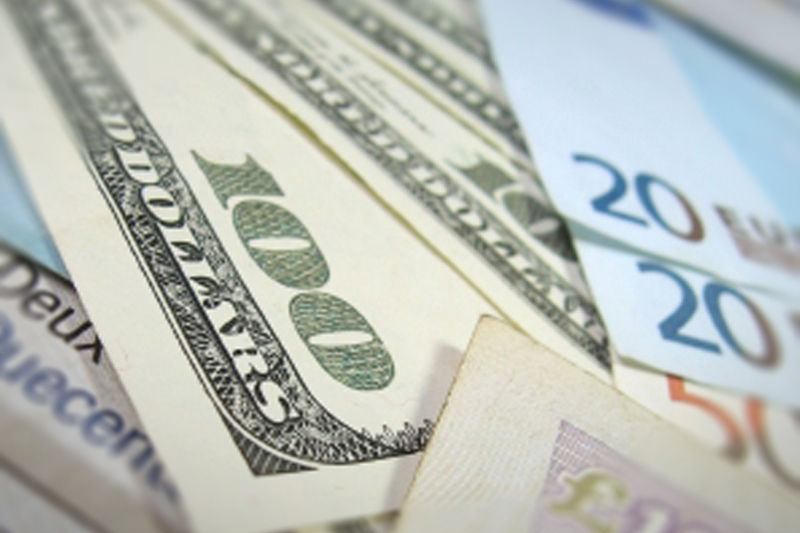Investing.com -- EUR/USD inched up in subdued trade on Monday, as the dollar fell slightly due to weak manufacturing data, ahead of a critical release of monthly consumer prices in the U.S. which could provide clearer indications on the strength of the world's largest economy.
The currency pair traded in a tight range between 1.1303 and 1.1343, before settling at 1.1321, up 0.0004 or 0.03% on the session. The euro has followed up a six-day losing streak that screeched to a halt last Wednesday by closing higher in three of the last five sessions. Although the euro is relatively flat against the dollar over the last month, it is up by approximately 4% against its American counterpart since the start of the year.
EUR/USD likely gained support at 1.0538, the low from December 3 and was met with resistance at 1.1713, the high from Aug. 24.
The dollar continued its recent decline on Monday morning after the Federal Reserve Bank of New York said its Empire State Manufacturing Index in May has fallen 9.02 points, halting a brief run of monthly gains over the prior two months. Weakness in new orders and inventories dragged down the overall reading, while shipments turned lower in May creating further declines. Analysts expected an increase of 7.00, following a 9.56 gain in April.
Investors await Tuesday's release of the Consumer Price Index (CPI) for April for further indications on the timing of the Federal Reserve's first interest rate hike in 2016. Analysts are predicting a mild increase of 0.3% in April CPI, in response to a 0.1% gain in March. The Core CPI Index, which strips out volatile food and energy prices, is expected to tick up by 0.2%. Since raising interest rates for the first time in seven years in December, the Fed has been hesitant to tighten its money policy cycle even further amid sluggish inflation.
Any rate hikes by the Fed this year are viewed as bullish for the dollar, as investors pile into the greenback in an effort to capitalize on higher yields.
Foreign exchange traders also reacted to varying opinions from influential leaders on the ramifications of a potential Brexit. Over the weekend, a letter signed by more than 300 business leaders in the U.K. backed a British departure from the European Union, amid claims that red tape in Brussels stifles competition and limits job gains throughout Britain. In the U.S., Republican presidential candidate Donald Trump punted on the issue, telling Good Morning Britain that it wouldn't make any difference to him if the U.K. remained in the EU or not.
Over the last several weeks, leading economists have warned that a Brexit could trigger heightened volatility on foreign exchange markets worldwide. British voters will decide on the public referendum on June 23.
The U.S. Dollar Index, which measures the strength of the greenback versus a basket of six other major currencies, fell by more than 0.15% to an intraday low of 94.44, before settling at 94.53. The index has crashed by more than 4% since early-December.
Yields on the U.S. 10-Year soared five basis points to 1.75%, while yields on the Germany 10-Year gained two basis points to 0.14%. Government bond yields on 10-year U.S. Treasuries and German Bunds have both tumbled at least 40 basis points over the last year.
